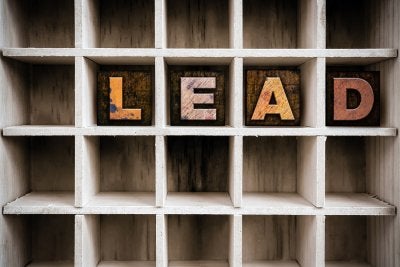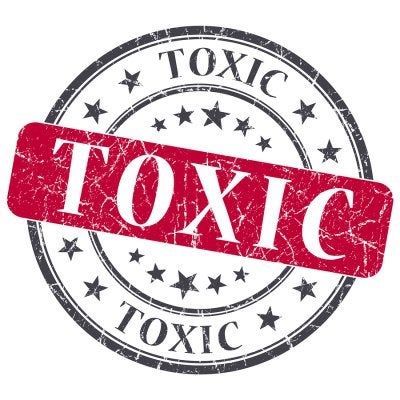-
Where Lead Could Be Lurking in Your Home
Lead is a substance that can pose a threat to your family’s health by affecting your home’s indoor air quality. For this reason, it’s important to test your home for this substance if there is any chance that it may be present, particularly before beginning projects like kitchen remodels or home renovations. When you have your home tested for the presence of lead and level of its air quality in San Francisco , there are certain locations where the inspection team might check for lead.

Homes that were built before 1978 may have lead-based paint. When you sand, tear down, or remodel walls that are covered in paint that is contaminated with lead, this can release harmful amounts of lead into the air that can cause a broad range of health issues in anyone exposed to them. Some older homes may also have plumbing that contains lead, which means that they can contaminate drinking water. If there is a chance that your home is contaminated with lead, then consider scheduling an air quality test right away.
-
Looking Back at the History of Lead
Although lead has been remarkably important in the rise of modern civilization and society, it’s also an insidiously toxic metal that has caused untold sickness and death as long as it’s been used. The dangers of lead poisoning are well documented today, but concerns with lead-based paint and other lead-containing products continue to drive businesses and homeowners to perform lead testing and seek lead abatement services in San Francisco. But how lead come to pose such a risk to modern society? Consider this brief history of lead to find out.
Early Romans and the Dangers of Lead

Lead played a major role in the building of the great Roman Empire, including the vast network of piping that kept Rom and the provincial cities of the Empire supplied with water. However, lead also played a role in the downfall of Rome. The Romans were aware that lead could cause serious health problems, and yet they equated limited exposure with limited risk. What they didn’t realize, as the world would discover in the 20 th century, is that everyday low-level exposure to the metal rendered them vulnerable to chronic lead poisoning.The U.S. Leads the World in Lead Consumption
Fast forward a few thousand years and the U.S. emerges as the world’s leading producer and consumer of refined lead. According to reports, by 1980 the United States was consuming approximately 1.3 million tons of lead per year, which represented roughly 40 percent of the world’s supply. Refined lead was used heavily in the automotive industry, and also as a paint additive. That’s why many homes and buildings that date back before 1980 are at a high risk of containing lead-based paint and other lead-containing materials.Lead Protection Measures
As the science and medical communities made the public more aware of the dangers of lead exposure, the U.S. government finally took action to protect its citizens. In 1977, the U.S. Consumer Product Safety Commissions banned lead paint in residential properties and public buildings, along with toys and furniture containing lead paint. Homes or buildings built before the ban took effect should be tested for lead-based paint by an environmental safety testing company in San Francisco. -
Removing Lead-Based Paint
If you live in older home, it’s important that you make sure there are no traces of lead-based paint that can cause anyone in your family to become sick from lead poisoning. A full lead-based paint survey will identify remnants of lead-based paint in your home. After you receive confirmation of lead paint in your home , you will need to take steps to remove the paint in order to limit exposure. Although lead-paint removal is best left to a professional remediator, there are things you can to do eliminate the threat in your own home.
Watch this video to learn about the proper way to dispose of lead paint. You’ll learn about the personal safety equipment you should wear when removing lead-based paint, and how to safely dispose of lead paint after it’s been removed from your home. You’ll also learn about other steps you can take after discovering lead paint in your home, such as painting over with a specially-formulated encapsulation paint.
-
Understanding Lead Toxicity and Poisoning
Lead-based paint and lead-contaminated dust are the most common sources of lead poisoning in children and adults, despite the fact that such paints have been banned for residential use since 1978. If you live in an older residence, it’s recommended that you schedule a lead inspection in San Francisco to determine whether this toxic heavy metal is present inside your home. However, lead-based paint isn’t the only source of lead poisoning. To protect yourself and your family, read this short blog to learn more about lead toxicity and to recognize the signs of lead poisoning.
Signs and Symptoms of Lead Poisoning

Initially, and at small doses, lead poisoning can be hard to detect, especially in health children and adults. Because the most recognizable signs of lead poisoning usually don’t appear until dangerous amounts have accumulated inside the body, seek medical attention if you recognize the following chronic symptoms in yourself or your family:- Abdominal pain
- Mood disorders
- Constipation
- Muscle pain
- Headache
- Memory loss
- Hearing loss
- Sluggishness and fatigue
Lead Poisoning Risk Factors
Although lead is harmful to all humans at high enough doses and over long enough periods of time, there are certain factors that can increase one’s risk of becoming lead poisoned. Infants and young children, for example, are more likely to be exposed to lead than adults and absorb the heavy metal more easily. People who live in homes or apartment buildings that were built before 1980 are also at risk of prolonged exposure to lead through the remnants of lead-based paints.Lead Poisoning Prevention
Children and adults are most frequently exposed to dangerous levels of lead inside older homes, which is why you should schedule a lead-based paint inspection with an environmental testing company in San Francisco before doing any remodeling or touch-up work in an older house that may contain lead paint. If your home has older plumbing containing lead pipes or fitting, run the cold water for at least one minute before using and avoid using the hot water tap to make baby formula or for cooking. -
A Look at the History of Lead Paint
The use of lead paint in San Francisco began during Colonial times, and peaked in 1922. At the time, there was little knowledge of the danger of lead exposure and lead poisoning symptoms. Because lead paint was durable and washable, the interiors of many buildings and homes contained lead paint. By 1951, lead testing revealed the dangers of prolonged exposure to lead paint.
The first city to ban the use of lead paint was Baltimore, in 1951. By 1955, public health officials developed a national standard that allowed manufacturers to voluntarily limit their usage of lead in their interior paint. This caused a significant decline in the manufacture and use of interior and exterior lead paint throughout the 1950s and 1960s.
In 1971, the government passed the Federal Lead Poisoning Prevention Act. It wasn’t until the late 1970s that lead surveys and lead paint testing confirmed that lead poisoning symptoms could be caused by exposure to household dust. In 1978, the federal government banned the consumer use of lead paint. Homes and buildings constructed prior to 1978 should undergo thorough lead surveys and lead paint testing to ensure that they are safe.

-
What to Expect from Your Lead Survey
If your home was built before 1978 and you have children living there, you should take the time to have a lead survey done. Lead can be very harmful to kids and, unfortunately, it is incredibly easy for them to ingest it if it is present anywhere in your home. The good news is that it’s easy to conduct a lead test in San Francisco to see if you need to have lead paint or other sources of lead removed. Here is what you can expect from a lead survey.
Testing Inside Your Home
When you hire a company to come in and do a lead survey for you, they will test every single part of the home that may have lead paint. They will conduct a lead test on window frames, baseboards, kitchen cabinets, painted children’s furniture, trim, and any other items that have been painted. It’s important to have a comprehensive lead test done to ensure that all areas are tested for lead paint.
furniture, trim, and any other items that have been painted. It’s important to have a comprehensive lead test done to ensure that all areas are tested for lead paint. Testing Outside Your Home
While most people think that lead paint is the only place where lead can be found in a home, it can also be found outdoors. You may have lead-contaminated soil right outside of your home. Therefore, a lead test will be conducted on the soil as well as on any chipped or peeling paint on your home’s exterior.Evaluating Your Results
Are the lead levels in your home too high? The company that does your lead survey will be able to get a reading for the lead levels inside and outside your home and compare them with the acceptable levels determined by the U.S. Environmental Protection Agency and Department of Housing & Urban Development. If they are above those levels, they are considered hazardous .Taking Action
If a lead paint test shows that you have high levels of lead in your home, you will need to take the necessary steps to reduce them. You should work with a licensed lead contractor to take care of the problem. -
Lead Paint and Your Health
Lead paint can be extremely problematic for men, women, and especially children, which is why you should consider having a lead survey done on your home to detect the presence of lead. Federal regulations didn’t restrict the use of lead paint until 1978, meaning many older homes still have it. You should strongly consider lead testing near San Francisco to see whether or not lead is present in your home. Here are some of the ways that lead paint can affect those in your family.
Health Hazards for Children
If lead paint or lead dust is present, your children could be very susceptible to the dangers of lead exposure. This is because children’ nervous systems are typically more sensitive than adults’ nervous systems. Lead exposure can lead to kidney damage, behavioral and learning problems, stunted growth, and hearing issues in children.
because children’ nervous systems are typically more sensitive than adults’ nervous systems. Lead exposure can lead to kidney damage, behavioral and learning problems, stunted growth, and hearing issues in children. Health Hazards for Adults
While adults are less prone to experience lead poisoning than small children, they can still feel the effects of lead exposure. Lead exposure can lead to high blood pressure, memory problems, muscle and joint pain, nervous system disorders, fertility issues, and more in adults.Health Hazards for Pregnant Women
Pregnant women should never be exposed to lead. If lead enters their systems, they can pass it along to their unborn babies. This can lead to premature births, brain and nervous system damage, and lower birth weights. Lead exposure can also cause permanent damage to babies.Protecting Your Family
The only way to know if your home has lead inside of it is to have a lead survey done. A lead paint test can determine whether or not the interior and exterior of your home was ever painted with lead. If it was, you can then decide how to treat the walls of your home accordingly to prevent lead poisoning from taking place. It’s very important to test for lead before it is too late. -
A Look at Your Lead Testing Options
Testing your home for lead paint with a lead survey is something that you should do if your house was built before 1978. That was the year federal regulations outlawed the use of lead paint because of the dangerous health risks associated with lead exposure. You can have a lead test in San Francisco done today to find out whether or not lead is present in your home.
Safe Air Fast can test your home by doing a full or limited lead survey. We can either examine your entire home for the presence of lead or just certain parts that you suspect might include lead. We can collect paint samples from your home, test them at an ELLAP accredited lab, and show you the lead test results. We can also help you remove lead paint from your home and then re-test it to make sure the lead is 100 percent gone. You can trust Safe Air Fast with the speedy removal of lead from the premises. We also provide asbestos testing and mold inspections in the Bay Area.

-
Important Information About Lead Paint
Up to 35 percent of the homes in the United States contain lead paint somewhere on their properties. Older homes are more likely to be contaminated with lead paint than newer residences. For example, up to 9 out of 10 houses built before 1940 contain lead paint. This statistic drops to 7 out of 10 houses that were constructed between 1940 and 1960. If you are concerned about lead paint in your home, you may want to consider setting up a lead survey. During a lead survey, a team of experienced technicians will use a lead testing kit near San Francisco to check for any signs of lead contamination. To learn some more important information about lead paint, be sure to check out this video from Angie’s List.
-
What Are the Signs of Lead Poisoning?
Lead is a highly toxic substance that may be found in the paint, pipes, or other construction materials of older homes. To protect the health and safety of your family, it is of the utmost importance to schedule lead testing if you suspect that you may have an issue. During a lead test, a company offering lead testing in San Francisco will evaluate the lead levels of materials throughout your home and property. If lead is identified during the test, you will be provided with more information about how to remove this harmful substance form your property. To help you determine if you need a lead test, read on for a look at some of the signs of lead poisoning.
Lead Symptoms in Children
If you are a parent, it is important to know that children are particularly susceptible to the damaging effects of lead poisoning . Some of the common symptoms of lead poisoning in children include excessive tiredness, unusual
hyperactivity, weight loss or gain, and sleeping problems.
Cognitive Symptoms in Children
Along with causing immediate health issues, lead poisoning can also lead to long term cognitive effects in children. For example, lead poisoning has been linked to brain damage and a variety of learning and behavior problems. Additionally, lead poisoning has also been linked to speech impairment, liver and kidney damage, and hearing damage. To determine whether your child has been affected by lead poisoning, you should be sure to visit your family doctor if you notice one or more of these symptoms.Lead Symptoms in Adults
Lead poisoning is also a concern for adults. If you or a family member is suffering from lead poisoning, you may notice symptoms such as headaches, sleeping problems, stomach pains, and unusual tiredness or irritability. Extended lead exposure can also lead to damage to the brain and nervous system. To protect your family from the dangers of lead, you can start by scheduling a lead test as soon as possible.
RECENT POSTS
categories
- Uncategorized
- Lead
- Mold
- San Francisco Mold & Asbestos Removal
- Indoor Air Pollution
- Mold Remediation
- Asbestos
- Safe Air Fast
- Mold Inspection
- Remediation
- Bacteria Testing
- Asbestos Testing
- Abatement
- Lead Testing
- Sewer Line
- Lead Survey
- Mold Testing
- Air Quality Inspection
- Home renovations
- Allergies
- Renovation Contractor
- Infographic
- lead paint
- Air Quality
- Air Quality Test
- Mold removal
